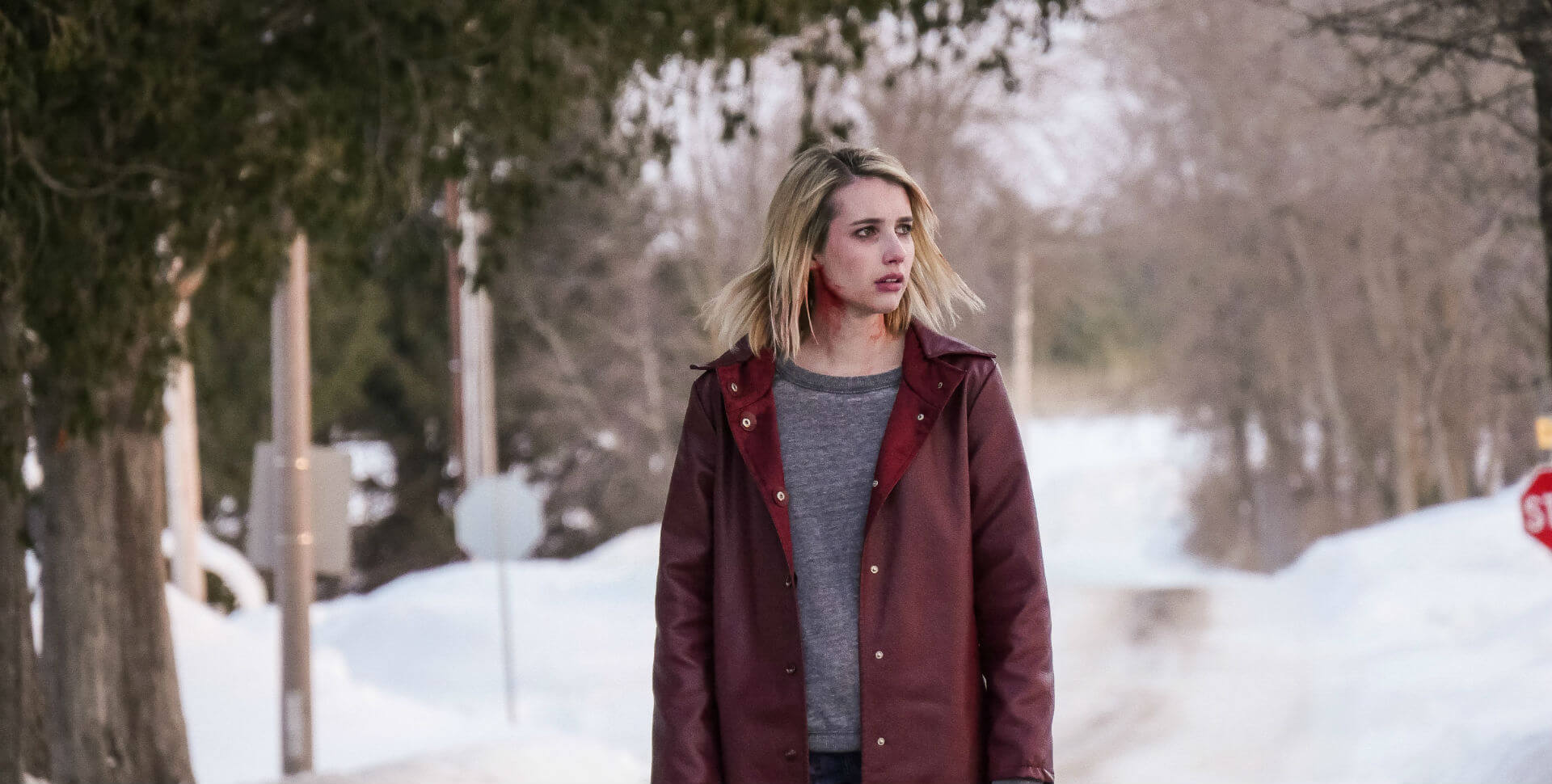The Blackcoat’s Daughter [2015] is a supernatural psychological horror film written and directed by Osgood Perkins that proves an exciting new talent that will add to another banner year for horror cinema. The film is a typical debut in that its director quotes freely from his favorite genre classics. To paraphrase one of its characters, this kind of borrowing amounts to a “conduct expectation,”, particularly for the filmmakers behind scary movies. Perkins succeeds, however, in both establishing and maintaining an all-encompassing, unrelenting disquiet that’s anything but typical.
February: I attended a small college located just a short drive from New York’s Adirondack State Park. Throughout the grueling, sometimes eight-month winters, the landscape, so remarkable during the other four, would mingle with the gray and brown expanses of the Rust Belt to exude a lonely, desolate, and inescapable melancholy. Obviously, my collegiate days may have preconditioned me to appreciate this film’s particularly icy brand of terror. Though he staged it in Ottawa, Perkins sets his diabolical narrative at an all-girls, Catholic boarding school somewhere in Upstate New York as February draws closer. With the help of his brother Elvis’ eerie score and Julie Kirkwood’s stark, suggestive imagery, he captures the region’s wintry gloom and its vague, ubiquitous sense of dread.
“We Can’t Let you Live Here:” At the prestigious Bramford School, a mid-term break has just begun. Following an assembly, eager parents arrive to reunite with their children. Gradually, they leave, and happy scenes are replaced by an air of quiet isolation. Soon, a more mysterious quality, one that borders on menace, begins to emanate from the cold walls of lonely buildings. Only two students remain to observe these changes and feel their chilling effect. Kat (Kiernan Shipka), a first-year student, seems easily the more susceptible of the two. Without a phone, she’s totally oblivious to her parents’ whereabouts. Shipka more than delivers on the promise of her many years as television’s Sally Draper. Her bedeviled, enigmatic performance haunts the frame and suggests a special feeling for the rhythms of this genre. Kat’s companion, Rose (Lucy Boynton) knows her parents should arrive tomorrow. Feeling little fear of her own, she exploits her young peer’s unease with urban legends about devil worship on campus. Like Kat, the viewer has seen, heard, and felt enough by this point to wonder if they should take these tales seriously.
“You are Not Welcome Here:” Many critics and moviegoers have already doomed the film by calling it a ‘slow burn.’ The misleading label often suggests an outright lack of fright, and could very well lead scare-hungry horror fans to avoid this gem entirely. Perkins certainly demurs when it comes to bloody violence. He does not, however, take his time in introducing the film’s pervasive nightmarish qualities. Even the least discerning viewer would agree: it’s immediately apparent that something is not right. The film’s every element exploits the viewer’s impulse to make dark corners look like lurking threats, and creaking floorboards sound like certain doom. Kirkwood’s pans and compositions leave potential horrors unseen, the roiling score sounds perpetually ominous, and every actor appears committed to concealing some horrific secret. For much of its running time, The Blackcoat’s Daughter provokes moments of outright terror with the kind of subtlety and off-kilter awfulness that phrases like “slow burn” can’t begin to describe. Perkin’s earns nearly every deliberate and ambiguous second.
“Don’t Go:” Unfortunately, the film loses some ambiguity, and, as a result, a good deal of nuance when its separate narrative streams finally converge. Kat and Lucy share the screen with a third young woman whose name provides the title for the second of its three chapters. Joan (Emma Roberts), too, appears troubled by an unknown force. More strangely, she is determinedly making her way across the snowy center of the state toward Bramford. Roberts, a genre veteran, delivers a performance that’s often decidedly less subtle than the film and performances around it. Her facial tics and plainly disturbed mien threaten to change the film into a less inscrutable chiller well before its climax. Like another three-part horror debut - Nicolas Pesce’s The Eyes of My Mother, Perkins’ film falters partially because its threats are far less unsettling once they’ve been fully literalized. For Perkins, this means increasingly blunt scripting (a character says, “Hail Satan”), more brazen homages (Surprise! Anthony Perkins’ son has seen Psycho), and a gory crescendo that almost, but not quite, manages to undermine the atmospheric tension before it.
Though he cannot avoid some third-act troubles, Osgood Perkins distinguishes himself as a promising new director with The Blackcoat’s Daughter. Emphasizing the quiet sadness beneath his character’s anger and fear, he crafts a film that possesses the mind like a vengeful spirit.

Watch The Blackcoat's Daughter Now
